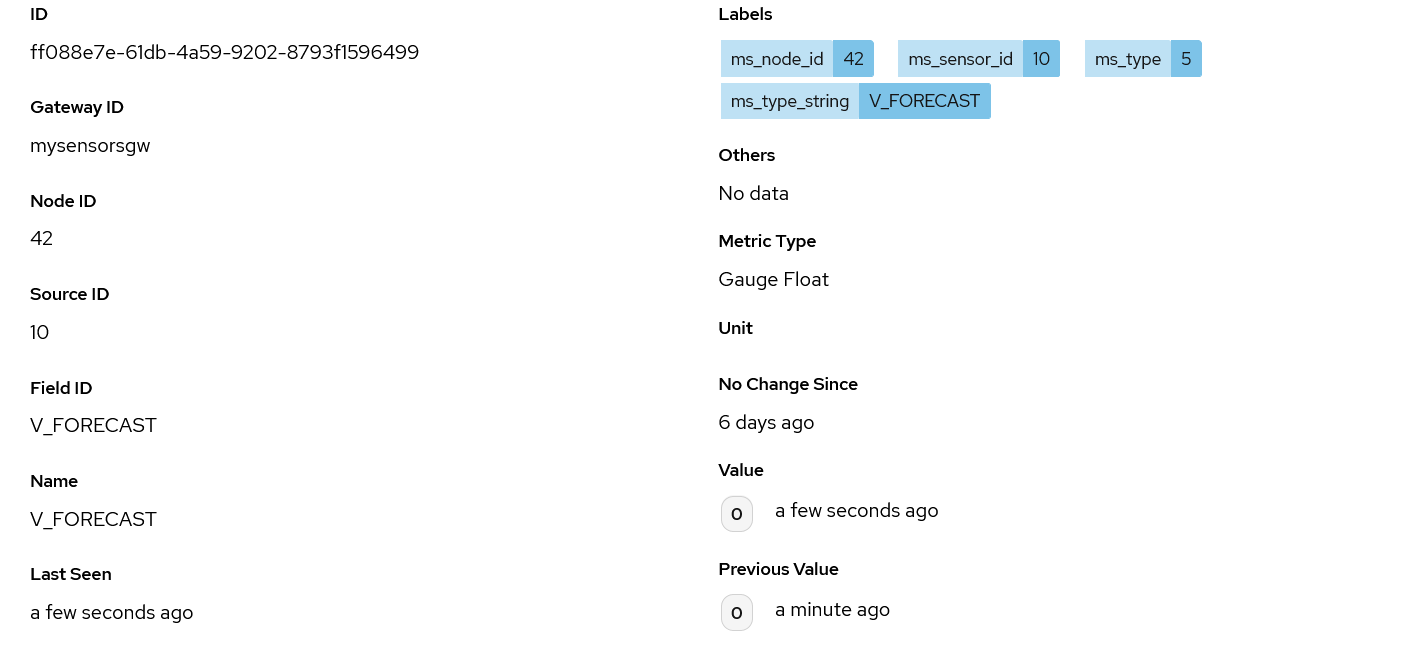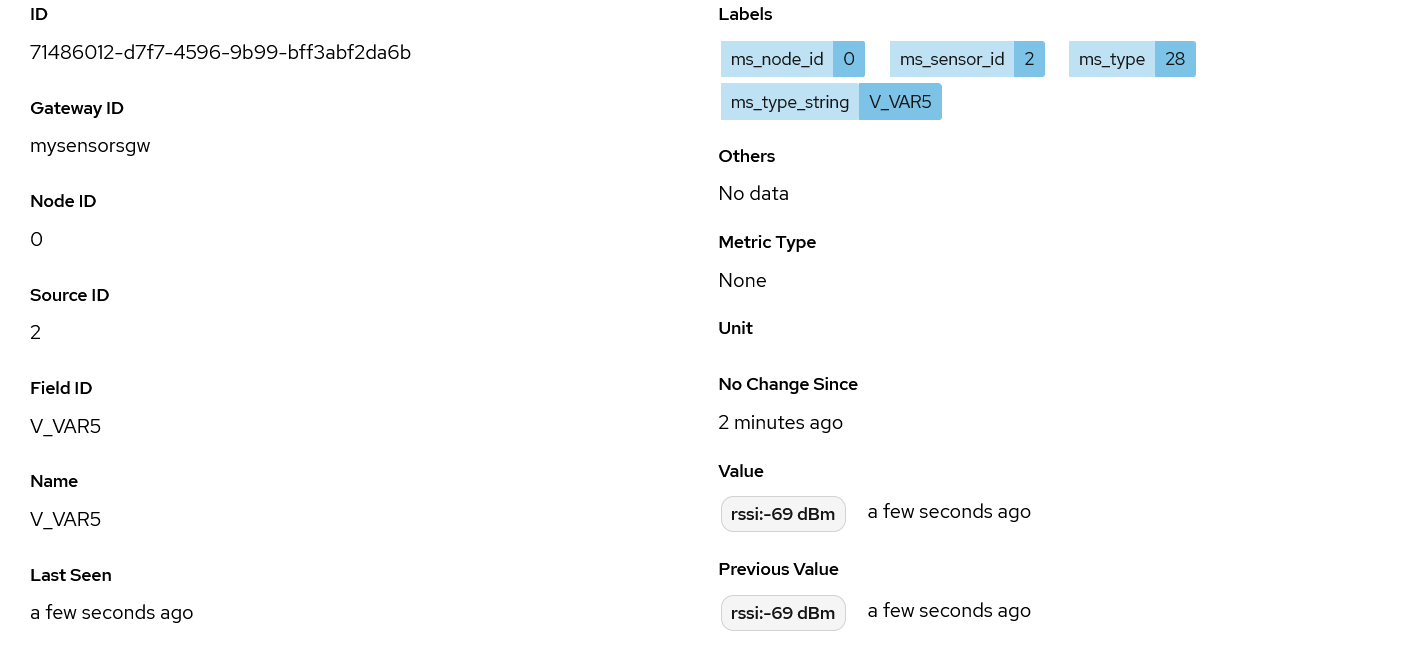MyController 2.0 is ready for testing
-
@jkandasa Yes,I would be keen to give it a try! Thanks again for the time and effort you have invested in both legacy and new controllers!
-
@jkandasa Hello, I would also like to try out your new version. At our school we have been using your old v1 Java implementation for our weather station build by our students. It is running on a Raspberry Pi connected to the serial pins via radio receiving data from a custom made MySensors node.
You can find our old setup code here: https://gitlab.com/rrbz/meteo/metteo/-/blob/0241002c06f0258949590810258b72c2a95ff543/metteo-config.lib.sh#L380-492
Basically we setup everything by overwriting the initial configuration by a preconfigured MyController settings backup and do a little housekeeping with systemd unit files.
-
@pillarama @j54n1n Thanks for your interest in v2. Currently, I am working on the installation documentation. I will keep informed you
@j54n1n your setup looks interesting! Thanks for sharing the setup code!
-
I'm using mysensors with domoticz and would like to assist you with good testing. Let me know how to start with it!
-
@hj_sk Welcome to MyController community

Thanks for your interest
I am working/reworking on documentation.
I will keep informed you. -
Hi @hj_sk I have updated the V2 doc to install MyController server v2. But still lot things to be updated.
Kindly follow the document and let me know if you see an issue.
Thanks!Documentation: https://v2.mycontroller.org
-
Hello @jkandasa,
In the meantime I did some test runs with the weather station and I did notice some things.
-
The forecast field is missing its text value and it is showing always 0 instead, like so:

I think it is related to how you map the MySensors field data types. Here at plugin/gateway/provider/mysensors_v2/constant.go you map it as a float type, but according to the MySensors Protocol 2.x documentation it should be a string of either "stable", "sunny", "cloudy", "unstable", "thunderstorm" or "unknown". Your old v1 controller seems to intercept that correctly and shows for example the sun or the cloud symbol. Do you intent that to do the same also in your new v2? -
Regarding the data types it seems when the type none is mapped a string can be displayed for a field. For example this is the case for your old v1 style RSSI indicator message:

So maybe the first point can be partly resolved by changing the type. Furthermore do you intent also reuse your old style RSSI message to let it show at the node status page? Or do you want to support either the MySensors I_SIGNAL_REPORT_REQUEST feature or the NodeManagers signal sensor to show its value at the node status page? In my case the later solution would fit the best because our node is sleeping most of the time without smart sleep to conserve power. -
Currently the internal message for the battery percentage is not showing up anywhere. Also there your old v1 controller would show the percentage on the node status page. The MySensors implementation is similar as the NodeManagers SensorSignal solution but it is using an internal message type.
So I think that was everything for now. I am curious what you are thinking about it.
Thanks in advance and kind regards. -
-
@j54n1n Thanks for the detailed report. I have added a GH issue to track this
https://github.com/mycontroller-org/server/issues/2 -
Hello @jkandasa,
Now I am trying to automatize the installation of MyController v2 from within a Bash script, where I want to preset the MySensors gateway.I found your documentation at https://v2.mycontroller.org/docs/user-interface/resources/gateway-mysensors/ where you show also as an example a yaml file. Furthermore I found within the directory
mc_home/data/storage/memory_db/yaml/a file calledgateway__1.yamlwith the settings of the gateway that I inserted via the web UI.The content of the file is like the following:
- id: MySensors description: MySensors Serial 2MQTT Bridge enabled: true reconnectdelay: 30s queuefailedmessage: false provider: enableInternalMessageAck: true protocol: broker: tcp://127.0.0.1:1883 publish: mysensors-in qos: 0 subscribe: mysensors-out/# transmitPreDelay: 10ms type: mqtt retryCount: 3 timeout: 500ms type: mysensors_v2 messagelogger: type: none labels: location: server others: {} state: status: up message: Started successfully since: 2021-08-06T17:40:06.560894835+02:00 modifiedon: 0001-01-01T00:00:00Z lasttransaction: 0001-01-01T00:00:00ZCan I simply assume that if I drop such a yaml file in that folder that a new installation of MyController v2 will simply pick it up or do I need to setup also something else?
Also most likely in the preconfigured yaml file I can simply drop the part of
state:,modifiedon:andlasttransaction:, right?Also can be the name of the file anything or do I need to follow some convention?
Thanks
-
@j54n1n sorry for the delayed response.
Actually you are accessing the storage data directly. Those data will be loaded at startup. and overwritten from memory on an interval mentioned on the mycontorller.yaml file.It is a Yaml list, you can configure any number of gateways on that file, file name should be as
gateway__1.yamlYou can omit
state,modifiedon,lasttransactionfields.Please note: as this is storage schema (not exposed to end user directly), can be change in the future release. It may be an extra work for you, in case if there is a change in the future.
-
@jkandasa ok, thanks for your info on that topic.
So maybe could there be in the future a more official way to script this? You mentioned for example in the Github issue from MyController v2 some form of scripting.
Or maybe going back to the v1 approach of a backup file or something like that?
Kind regards
-
So maybe could there be in the future a more official way to script this?
Possible options,
- keep a backup and restore from that backup.
- In the future I will show an example to add/modify a resource via API
You mentioned for example in the Github issue from MyController v2 some form of scripting.
I mentioned the script to convert the received values with specified math. script result supplied to the MyController.
Or maybe going back to the v1 approach of a backup file or something like that?
We have backup/restore option, in V2 it is possible to backup/restore to different databases (except metrics)
-
-
Hi @j54n1n, yes, please report in GitHub. Thanks for your time on this!
-
@j54n1n Are you seeing this issue on startup of the MyController server?
-
@jkandasa yes it was at startup, but only once so far and after a restart of the service I did not see that again. Maybe some type of race condition? Could it be that it depends if either influxdb or mosquitto are ready or not at boot?
This is the service unit file that I am using:
[Unit] Description=MyController.org v2 daemon Requires=network.target After=influxdb.service [Service] User=mycontroller Group=mycontroller WorkingDirectory=/opt/apps/mycontroller ExecStart=/opt/apps/mycontroller/mycontroller-server -config /opt/apps/mycontroller/mycontroller.yaml [Install] WantedBy=multi-user.target -
@j54n1n Yes, it should be race condition. I will look into the code carefully.
-
Hi, I'm interested. Can I contact you in PM?
-
topic:user-pinned-topic-on,
J jkandasa,
-
I'm trying to install the docker image, but can't get it to start up... Dosn't seem to pick up the yaml file as using defaults... {"error":
"Get \"https://ipinfo.io/json\": dial tcp 0.0.0.0:443: connect: connection refused"}```I've install everything on the quick install page... and use the following docker command
docker run --detach --name mycontroller2b --publish 8081:8080 --publish 8443:8443 --publish 9443:9443 --volume /root/mycontroller/mc_home:/mc_home --volume /root/mycontroller/mycontroller.yaml:/app/mycontroller.yaml --env TZ="Europe/Prague" --restart unless-stopped docker.io/mycontroller/server:masteris the
:/app/mycontroller.yamlcorrect ?
Thanks -
@rmf69 said in MyController 2.0 is ready for testing:
{"error": "Get "https://ipinfo.io/json\": dial tcp 0.0.0.0:443: connect: connection refused"}
This error may be due to you do not have internet access of your firewall blocks
https://ipinfo.io/json
To avoid this error disable auto location detection feature and enter your location details manually.

I do not see any error in the docker run. Can you please double check the availability of the
mycontroller.yamlon your host machine?enter into the docker container and verify the file
# docker exec -it mycontroller2b /bin/sh /app # cat /app/mycontroller.yaml